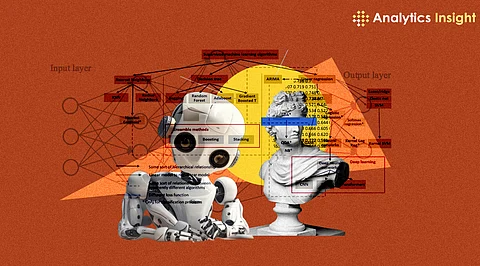

In the rapidly evolving landscape of business analytics, machine learning algorithms have become indispensable tools for extracting insights, making predictions, and automating decision-making processes. Businesses across various sectors leverage these algorithms to gain competitive advantages, enhance operational efficiency, and drive innovation. This comprehensive article delves into the essential machine-learning algorithms that are revolutionizing business analytics.
Machine learning (ML) is a subset of artificial intelligence (AI) that involves training algorithms to learn from and make predictions based on data. In business analytics, ML algorithms analyze historical data to uncover patterns, trends, and relationships that inform strategic decision-making. The application of ML spans across domains such as finance, marketing, supply chain, human resources, and customer service.
Overview
Linear regression is one of the simplest and most widely used algorithms in business analytics. It models the relationship between a dependent variable and one or more independent variables by fitting a linear equation to observed data.
Applications
Sales Forecasting: Predicting future sales based on historical data.
Risk Management: Estimating financial risk by analyzing market trends.
Pricing Strategies: Determining optimal pricing based on various factors such as demand and competition.
Benefits
Easy to interpret and implement.
Effective for understanding relationships between variables.
Overview
Logistic regression is used in the case of binary classification problems. The probability of a binary outcome is calculated based on one or more predictor variables.
Applications
Prediction of Churn: Customers likely to leave a service
Fraud Detection: Fraudulent vs. Legitimate transactions.
Effectiveness of Marketing Campaign: Likelihood of customer response to the campaign
Benefits
Provides probabilistic outputs
Work well with large data sets and complex relationships.
General Description
A flexible algorithm serves both for classification and regression. This algorithm divides data into branches for decision implementation regarding the value of features.
Applications
Customer Segmentation: Division of customers into several different groups based on their behavior.
Credit Scoring: Deciding the creditworthiness of loan applications.
Supply Chain Optimization: Making decisions on inventory levels and logistics.
Benefits
It's easy to see and understand.
It operates a decision based on a numerical and categorical value.
Handles big data.
Outline
Random Forest is an ensemble learning method; it builds several decision trees and combines their outputs. This way, it improves the accuracy and reduces overfitting of the model compared to using individual decision trees. Applications include: Product recommendation—prediction of products a customer is likely to buy Stock market prediction—prediction of stock price at a given time in the future, given the history Quality control—detection of defects in the process of manufacturing Benefits High accuracy and robust Improved overfitting risk.
Overview
Support Vector Machines are powerful algorithms used for classification and regression tasks. They find the optimal hyperplane that maximizes the margin between different classes.
Applications
Text Classification: Categorizing emails as spam or not spam.
Image Recognition: Identifying objects in images.
Customer Sentiment Analysis: Classifying customer reviews as positive or negative.
Benefits
Effective in high-dimensional spaces.
Works well with clear margin of separation.
Overview
K-Nearest Neighbors is a simple, non-parametric algorithm used for classification and regression. It assigns a class to a data point based on the majority class among its k-nearest neighbors.
Applications
Customer Behavior Analysis: Grouping similar customers for targeted marketing.
Recommendation Systems: Suggesting products based on similar user preferences.
Anomaly Detection: Identifying outliers in financial transactions.
Benefits
Simple and intuitive.
Effective for small to medium-sized datasets.
Overview
K-Means Clustering is an unsupervised learning algorithm used to partition data into k-distinct clusters based on feature similarity.
Applications
Market Segmentation: Grouping customers based on purchasing behavior.
Image Compression: Reducing the number of colors in an image.
Document Clustering: Organizing documents into topic-based clusters.
Benefits
Efficient and scalable.
Useful for exploratory data analysis.
Overview
Principal Component Analysis is a dimensionality reduction technique used to reduce the number of variables in a dataset while retaining most of the variance.
Applications
Data Visualization: Simplifying complex datasets for visualization.
Feature Extraction: Identifying key features for model building.
Noise Reduction: Removing noise from data for better model performance.
Benefits
Reduces computational complexity.
Helps in identifying underlying patterns.
Overview
Neural networks are a set of algorithms modeled after the human brain, used for both classification and regression tasks. They consist of layers of interconnected nodes (neurons) that process data and learn from it.
Applications
Image Recognition: Identifying objects and faces in images.
Natural Language Processing: Understanding and generating human language.
Fraud Detection: Identifying fraudulent activities in financial transactions.
Benefits
Highly flexible and powerful.
Capable of learning complex patterns and relationships.
Overview
Ensemble learning combines multiple machine learning models to improve overall performance. Techniques like bagging, boosting, and stacking are used to create robust predictive models.
Applications
Fraud Detection: Combining different models to detect fraudulent transactions more accurately.
Customer Segmentation: Improving segmentation accuracy by combining various algorithms.
Credit Scoring: Enhancing the precision of credit risk assessments.
Benefits
Increases model accuracy and robustness.
Reduces the risk of overfitting by leveraging multiple models.
Machine learning algorithms have become essential tools in business analytics, offering powerful capabilities for extracting insights, predicting outcomes, and automating decision-making processes. From traditional algorithms like linear and logistic regression to advanced techniques such as neural networks and reinforcement learning, each algorithm brings unique strengths and applications to the table.
Incorporating these algorithms into business analytics enables organizations to make data-driven decisions, optimize operations, and gain a competitive edge. As technology continues to evolve, the importance of machine learning in business analytics will only grow, paving the way for more innovative and effective solutions in various industries.
Understanding and leveraging these essential machine learning algorithms can significantly enhance business performance and drive future success. Whether it's improving customer experiences through personalized recommendations or forecasting market trends with high accuracy, the potential of machine learning in business analytics is immense and continually expanding.
